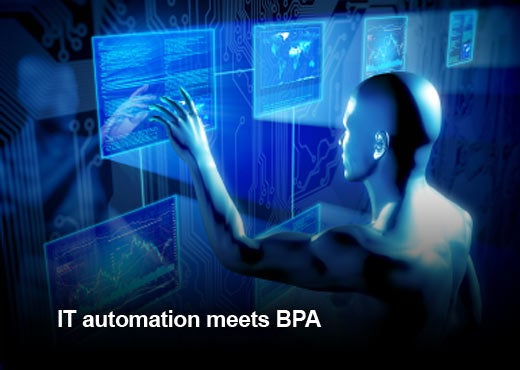IT environments are increasing in complexity. As a result, organizations are managing increasing numbers of applications, databases, technologies and resources. IT has traditionally relied on custom scripting to integrate these technologies and to develop workflows that automate processes across these various systems. But custom scripting is time consuming, error prone and expensive. Ben Rosenberg, CEO of Advanced Systems Concepts, Inc., maker of ActiveBatch Workload Automation, has identified six predictions for IT Automation in 2013.
Click through for six IT automation predictions for 2013, as identified by Ben Rosenberg, CEO of Advanced Systems Concepts, Inc.
IT environments are increasing in complexity. As a result, organizations are managing increasing numbers of applications, databases, technologies and resources. IT has traditionally relied on custom scripting to integrate these technologies and to develop workflows that automate processes across these various systems. But custom scripting is time consuming, error prone and expensive. Ben Rosenberg, CEO of Advanced Systems Concepts, Inc., maker of ActiveBatch Workload Automation, has identified six predictions for IT Automation in 2013.
Today, workload automation solutions can proactively predict “spikes” in workload execution to provision resources; the next step is to provide additional “what-if” predictive capabilities that allow you to forecast and plan workflow execution across a variety of systems and platforms. The forecast capability, when combined with that ability to tie workflows to SLAs, will provide an IT organization with an unparalleled and simplified way of managing workloads and resources across the enterprise.
Bringing the management of virtual and cloud resources into the IT automation equation presents the opportunity to allocate resources based on workload demands. In addition to ensuring resource are allocated for the successful completion of workflows, it also provides resource optimization and cost savings. Rather than continually provisioning server resources for peak demand – and paying the price for underutilization during low workload demand – the era of cloud computing provides the ability to match workload execution with resource capacity in a pay-as-you-go model.
Business process automation and IT automation are becoming two sides of the same coin. As business processes are increasingly “scripted” into routines for IT organizations to execute, IT automation solutions will play an increasingly critical role in enabling IT organizations to deliver the value and flexibility that the business is looking for by enabling business process automation with the ability to execute the deeper IT processes.
Self-service automation is where IT process automation meets business process automation. The idea is that an end user can use an IT automation solution to choose from a service catalog and initiate a process or workflow themselves — without the need to involve someone from IT operations, therefore improving IT service levels for the business. Ideally, end users could plan the execution of business processes themselves, and the IT automation solution will self-provision resources and load applications to achieve business objectives.
The size, complexity and speed of data are exceeding the capabilities of traditional data warehousing models. Combined with the democratization of BI solutions, it’s resulting in the replacement of the single data warehousing model with a model where information is integrated from multiple sources in real time. Workload automation solutions will be the catalyst to integrate data pathways into automated, repeatable processes that deliver a higher degree of control over all steps within the ETL/data warehousing process, resulting in “agile BI,” or the ability to update data integration processes more quickly and efficiently, resulting in improved data quality and faster time to insight.
Businesses are becoming increasingly dependent on the digital experience, from websites and mobile technologies to cloud computing and social media. Ensuring that the underlying technologies and processes that power this experience are running efficiently and without fail is critical. The problem is that the processes, applications and computing infrastructure have complex interdependencies that no group of IT professionals can handle themselves. As we saw in 2012, even the smallest glitch can quickly spiral into a branding nightmare. To maintain IT continuity, enterprises will increasingly turn to IT process automation in 2013.









